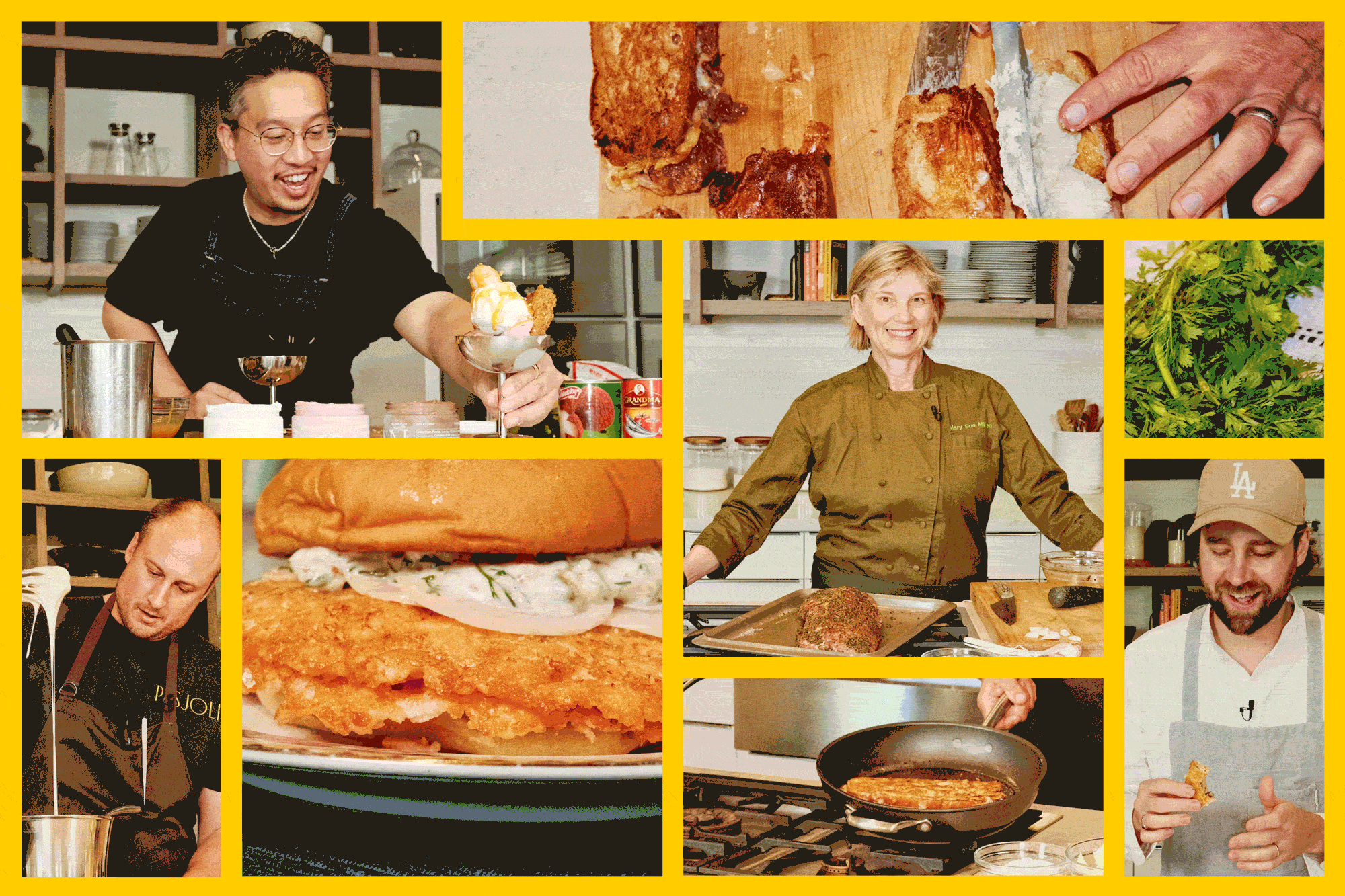Save Yourself Some Grief
- Share via
Everybody makes mistakes.
New cooks make them through ignorance. They add two tablespoons of dried thyme instead of two tablespoons of fresh thyme and end up with an overseasoned stew. Or they substitute margarine for butter when baking a cake, then wonder why it didn’t work.
Experienced cooks make them through carelessness, trying to do too many things at once. Because I was talking on the phone while I cooked, I didn’t notice that the lid wasn’t snapped onto the jar of hot red pepper flakes. Instead of a dash of heat, I wound up with the lid and half a jar of flakes floating in the garlic oil that was supposed to go over steamed broccoli.
But there also are mistakes we all make because what we were taught was wrong. Or so says Christopher Kimball, editor and publisher of Cook’s Illustrated magazine, in a booklet called “25 Common Cooking Mistakes . . . and How to Avoid Them.”
“A lot of things we do in the kitchen every day are simply wrong,” Kimball says. “They are the holdover techniques that your mother or father or your cooking school instructor taught you 20 years ago, but that just don’t hold, because food and equipment have changed. The classic example is scalding milk before you make custard. We were told to do it because unpasteurized milk had an enzyme that kept sauces from thickening, but since pasteurized milk has already been heated, there’s no reason for us to heat it a second time.”
Several of the mistakes surprised me, such as the warning not to mix cookie dough with an electric mixer. It seems that an editor at the magazine was at a cooking school where some students made cookies by hand and others made them with a mixer. The motorized cookies were overprocessed, thinner and less chewy than those made by hand, because the heat and heavy action of the mixer almost liquefied the dough.
I’ve long since stopped trying to make Chinese food at home, but I never realized that my mistake was trying to do it in a wok. Round-bottomed woks were designed to use in a heat pit and don’t get hot enough when they’re held above the flames of a gas burner or barely touch the coils of an electric stove. You’re better off using a flat-bottomed skillet for stir-frying and letting it heat up well before you add food.
I loved that he considers trussing poultry a mistake. I’ve always felt vaguely guilty that I didn’t do it, the way I feel about not balancing my checkbook. But, despite the somewhat risque look of an untrussed bird, Kimball says it’s the way to go. When the legs aren’t bound close to the body, the dark meat is exposed to heat on all sides and can cook through before the white meat dries out. (He also says that at 180 degrees, the temperature at which pop-up thermometers pop, white meat is overcooked; instead, cook dark meat to 170 degrees and breast meat to 155.)
A few “cooking mistakes” were no surprise. It’s been years since I proofed yeast before adding it to dough. But before we had reliable yeast, careful cooks waited to see if it would bubble up in warm water to show that it was active. And I’m glad to find that Kimball and I agree that the microwave oven makes a good prep cook but a lousy cook. He says it cooks only three things well: bacon, polenta and swordfish. Here’s his method, slightly adapted, for nuking swordfish.
To order “25 Common Cooking Mistakes . . . and How to Avoid Them,” call (800) 888-6778.
MICROWAVED SWORDFISH
1 (16-ounce) can whole tomatoes, drained and sliced
1/4 cup chopped fresh parsley
1/3 cup chopped, pitted black olives
2 swordfish steaks, about 1/2 pound each
1 tablespoon olive oil
1 tablespoon lemon juice
Salt and pepper
Arrange tomatoes in single layer in deep-dish pie plate and cover with parsley and olives. Place fish on top.
Drizzle fish with olive oil, lemon juice, and salt and pepper to taste. Cover plate with plastic wrap and cook in microwave on high for 5 minutes. Remove from oven, puncture plastic wrap and let sit 2 minutes longer. Spoon pan sauce over fish.
Makes 2 servings.
Each serving contains about:
356 calories; 809 mg sodium; 71 mg cholesterol; 15 grams fat; 11 grams carbohydrates; 38 grams protein; 1.14 grams fiber.
More to Read
Eat your way across L.A.
Get our weekly Tasting Notes newsletter for reviews, news and more.
You may occasionally receive promotional content from the Los Angeles Times.










